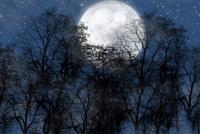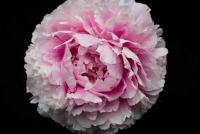Mini-catalog of the most beautiful evergreen climbers for hedges. Evergreen Ground Cover Plants
On garden plot A special place is occupied by groundcover grasses, as they help in some way to get rid of weeds. These plants grow rapidly, so do not give the opportunity to grow weeds. In the care they are very unpretentious, and create additional bright spots in the garden design.
Evergreens
These plants are distinguished by the fact that the leaf cover is updated gradually. Old leaves die not at the same time, but alternately, so the plant always looks green. These include hauttery with light pink flowers, blooming almost all summer, periwinkle, pakhisandru. All year they struggle with the growth of weeds, as they seize free territories for their own reproduction. In this role, creeping branches can also be used, such as horizontal juniper and yew cushion-shaped berry.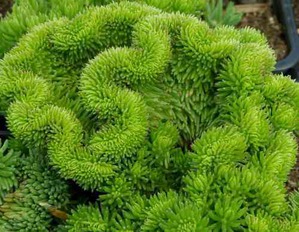
Winter-green ground cover plants
These plants include mainly perennial herbs. They are distinguished by brighter colors than evergreens. But their leaf cover is renewed for the second summer and this should be taken into account when forming compositions.Many of these plants reproduce by creeping rhizomes or shoots that root quickly. Therefore, you need to monitor the number of plants, if you do not want them to capture the entire garden.
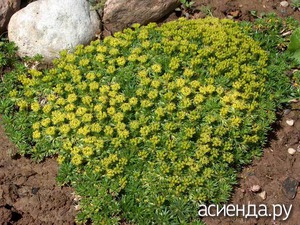
Plant selection
For different places of your site you should choose different ground cover plants. Many such perennials prefer the most shady places on the site. The choice here is quite extensive. Very European hoofed grass with glossy dark green leaves, creeping liveliver, blooming blue-violet flowers from May to the end of June;You can revive such a carpet with the help of the sedges. For example, a roadside sedge has wide bright green leaves or Japanese variegated, in which the leaves have longitudinal white stripes. These species of sedges spread creeping shoots.
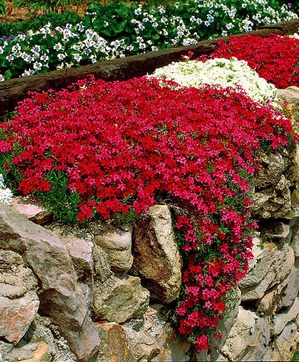
Many evergreens do not like the sun, so the choice for sunny places is much smaller. Best of all, dryad is eightfold. It is an evergreen small shrub that is adorned with large white flowers. Sedum evergreen will delight carpet of yellow flowers, and Dubrovnik purple flowers from May to August.
There is one plant that tolerates both the sun and the shade well - this is a large rooting geranium. It differs interesting leaves, resembling a carved fan open. In the fall, they come in a variety of colors: from pale pink to purple-red or different shades of yellow. Such a leafy carpet will serve as a bright spot in every corner of the garden. The special beauty of this plant in its flavor. It is no coincidence that this plant is successfully used in perfumery.
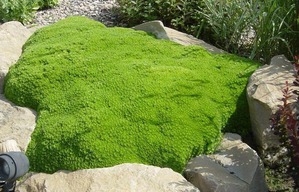
To ensure that the carpet does not look very monotonous and boring, you can land perennial herbaceous plantswhich have a more powerful root system, extending much deeper. In this case, the host, foxglove and daylily are very suitable. It will also look good among ground cover and bulbous plants such as grouse and daffodils.
How to plant ground cover plants
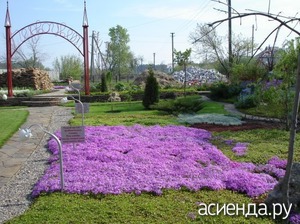
These plants can be planted at any time. It is only important to prepare a place for landing. It should be well plowed and weed carefully, because after the growth of the ground cover it will be very difficult. Further, the landing area must be fertilized and well moistened. After planting, they should be watered regularly for better rooting.
When planting you need to strictly observe the distance between the plants, if you want to create a solid carpet without weeds. It depends on the type of plant chosen. Fast-growing perennial grasses planted four plants per square meter. A slow-growing should be planted on the same square meter already 16 plants. Then after two years you can expect a dense cover without weeds. Of course, ground cover plants in any case tighten the soil, no matter how much you plant them, but in order to achieve the best effect in the shortest possible time, you must stick to the proposed number of plants per square meter.
Ground cover plants are completely unpretentious. The main care is only watering in particularly dry time. It should be remembered that during the winter period, the growing season does not stop, so they constantly need water. If autumn has stood out very dry, then the plants need to be watered until November.
The overwhelming majority of summer residents are under the delusion that the only evergreens that feel comfortable in our northern climate are conifers.
In reality, there are more such “Stoics”. And among them there are not only shrubs, but also grassy perennials.
First, let's look at the terminology. Plants, preserving foliage in winter, are divided into evergreen and wintry. Representatives of the first group each leaf lives not only one season, but several years (of course, it is better to forget about eternity: there is nothing eternal in the world at all). The latter retain the foliage during the winter, but in the spring it dies off, and in its place a new one appears. Among the evergreens that can be grown in the gardens of central Russia, the majority are shrubs and shrubs.
Winter greens are mostly perennials.
WOOD-BUSH
Evergreen shrubs that can withstand our harsh winters, not so little. Moreover, among them are the aborigines, familiar to every summer resident. First of all, it is lingonberry, cranberry and bearberry.
Other representatives of the heather family also justify the aspirations of gardeners: podbel (andromeda), narrow-leaved kalmi, some varieties of heathers and Eric, and of course, evergreen rhododendrons, among which are fairly cold-resistant. The varieties of Finnish and Polish breeding (Helsinki University, Haaga, P.M.A. Tigerstedt, Heliiki, Kazimierz Wielki, Krolova Jadwiga, etc.) and some species, such as r. Dahuri, Katevbinsky, short-fruited, Smirnova and others.
Separately, it is worth mentioning wild rosemary, in particular, the marsh widespread throughout almost all of our country, as well as Greenlandic, featuring a very beautiful flowering (by the way, in modern botanical systematics they are also referred to as rhododendrons).
AT middle lane Of Russia, the Mahoniya Padubolistnaya has proved itself well - evergreen shrub native to North America with spectacular shiny leaves. Among ground cover species, Dammer's cotoneaster with small leathery leaves and a spruce euonymus deserve attention, the foliage of which rather resembles pine needles. But the Forchun's euonymus, popular in Europe, whose most beautiful varieties are often found on sale, unfortunately, cannot boast stability and stability. Although with a properly chosen landing site (lack of moisture) and a proper winter shelter, it may well grow and prosper in Russian gardens. The same applies to the famous boxwood.
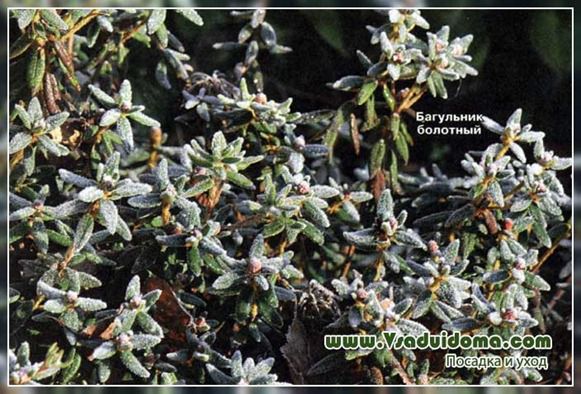
Inexperienced gardeners often panic, noticing how, with the onset of cold weather, the leaves of evergreen rhododendrons descend and twist into a straw. In fact, this is just a defensive reaction of the plant, which seeks to minimize the evaporation of moisture from the surface of the leaf plate, and there is nothing to be afraid of. cold resistance, is fraught with difficulties. Frosts do not threaten shrubs wintering under snow, but in snowless winters at very low temperatures they can freeze, so preventive shelter doesn’t hurt them.
As for evergreen rhododendrons, these beauties often suffer from spring sunburn, so they need to be planted only in the openwork shadow, best of all - under the canopy of pines.
If there is no suitable place on the plot, it will be necessary to take care of their shading and protection from drying out winter winds, which can damage not only flower buds, but also leaves. The best option for shelter would be stretched burlap along the frame. In the same way it is worth taking care of magonia. But the Forchun's boxwood and euonymus will not interfere with the insulation, having fallen asleep, for example, “with the head” with oak leaves.
Grassy evergreen
 Among the evergreens there are some perennials. Some of them, such as Badan, periwinkle and styloid phlox, grow in almost every garden. Familiar with many gardeners and representatives of the family of pulp grass: young and stonecrop. Specific mountain species (dryads, arabis, saxifrage, some species of breakthroughs and Levisa), as well as ferns - derbyanka, listovik, tintomium, are far less famous.
Among the evergreens there are some perennials. Some of them, such as Badan, periwinkle and styloid phlox, grow in almost every garden. Familiar with many gardeners and representatives of the family of pulp grass: young and stonecrop. Specific mountain species (dryads, arabis, saxifrage, some species of breakthroughs and Levisa), as well as ferns - derbyanka, listovik, tintomium, are far less famous.
The range of winter green perennials is much richer. There are a lot of universal plants among them, which can simultaneously appear in the garden both as decorative leaves and as flowering blossoms. Some such geraniums and veronica, gravilates, freezers, mellies, liverworms belong to such “multi-machines”. Wintering leaves can boast of certain types of mountain huts, which are not often seen in Russian gardens.
This can only be regretted, since these wonderful plants differ not only in amazingly beautiful flowering (for which they received the name “flower of elves” in Europe), but also in very attractive foliage.
On the other hand, numerous varieties of geyher and geyherell are amazingly popular among amateur gardeners; they amaze the imagination with a variety of colorful leaves.
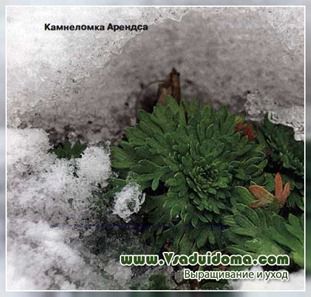 Most of these plants are quite stable in central Russia, but every barrel of honey will certainly have a fly in the ointment: it is advisable to winter them under snow. In snowless winters, some of them can suffer from frost, and all without exception - from physiological desiccation (after all, the wintering leaves will be open to all winds). Therefore, for especially valuable specimens it is not bad to provide a preventive shelter, since it is easy to do this - all these types are low.
Most of these plants are quite stable in central Russia, but every barrel of honey will certainly have a fly in the ointment: it is advisable to winter them under snow. In snowless winters, some of them can suffer from frost, and all without exception - from physiological desiccation (after all, the wintering leaves will be open to all winds). Therefore, for especially valuable specimens it is not bad to provide a preventive shelter, since it is easy to do this - all these types are low.
MOCHOVID
Special mention deserve the plants, which in everyday life, few people pay attention, although they often come across to everyone. This is a variety of mosses. Someone will be puzzled by the very thought that they can be counted among the decorative garden perennials. However, those who are interested in the culture of Japan, will not show the slightest surprise.
Moss gardens are an integral part of the Japanese garden tradition. With the help of these plants, you can create exquisite compositions in the shade, which is especially in demand in old, overgrown gardens. The moss is able to serve as a substitute for traditional lawn, which is almost impossible to break under the canopy of trees, decorate it with tiled or stone tiles. garden path, shore pond. The only thing he needs besides the shade is moisture: with its shortage, no moss will grow.
15.10.2006
Ajuga
One of the most interesting ornamental ground cover plants. Breeds above-ground creeping shoots that end rooting rosettes. Root system she has a fibrous, shallow, but strong. The zhivuchka blooms in early summer Inflorescences up to 30 cm long consist of numerous small blue flowers. She is unpretentious.
Good for filling all empty and unattractive places under trees, shrubs, and also looks good among colorful plants in flower beds. On nutrient soils, the tentacle forms plush carpets. The leaves, as a rule, are brown-beet or dark green, in the bright sun the color of the leaves becomes more expressive. Use this plant to create ground cover carpets, curbs, and also to fix the slopes.
Geychera (Heuchera)
Ground-cover plant from the family of stone-heel plants. Possesses magnificent wide rosettes from leaves. The leaves are lobed, oval, heart-shaped, covered with fuzz and pierced with veins. Small charming flowers sit on high peduncles. Geicher grow for decorative leaves.
Flowers - white, pink, red and even green - appear on peduncles from 45 to 75 cm high. Varieties are popular Peter Moon (pink flowers and marble gray leaves), Red spendlis (red flowers and pale green leaves with dark green stains), Greenfinch (green flowers and green leaves). The rhizome of geykhery short, dense and slightly creeping; root system is shallow. Geicher is easily propagated by sowing seeds, dividing the rhizome and cutting the rosettes. It grows well on any garden soil, but prefers loose and fertile. It can go without a transplant for a very long time, but young 2-3-year-old plants look tidier and bloom more abundantly. Geicher is moisture-loving, but drought-resistant. It develops well and blooms in partial shade and in the sun. In the snowless periods of winter requires dry shelter coniferous spruce branches.
Iberis - wall man (Iberis)
In addition to annual and perennial species, winter-green forms are of particular interest. These are overwintering shrubs with small stem oval-lanceolate leaves. The root system of this plant is weakly branched and deep. Small flowers of 2 cm in size are collected in corymbose inflorescences. Growing up, the plants completely cover the area of planting, turning into a cushion up to 30 cm high, and flowers are rising above the evergreen leaves. Reproduction in Iberis seed or vegetative - layering and cuttings. Iberis is grown on soils of medium fertility with good drainage, while taking into account the fact that he likes full or partial coverage.
An indispensable groundcover with dense gray-green, hairy, shallow foliage. In early summer, the leaves are hidden under small flowers the most diverse bright colors. After flowering Aubriet required pruning. The root system of this plant, ideal for creating a green carpet, is superficial.
Seed and vegetative reproduction. The main method - division in the spring, at the beginning of growth. Cutting - in the second half of the summer with new shoots growing after flowering. Obriet is unpretentious to the soils, but prefers well-drained areas illuminated by the sun. Hardy, but still for the winter it should be closed - in case of severe frosts. Stagnant waters are a great danger to obriety. Popular varieties are: Far-sighted (up to 12 cm tall), Aurevriegata (lavender flowers and leaves with a gold border), Bressingham Pink (double pink flowers) and Dr. Malis (purple flowers).
Kamnelomka - Saxifraga (Saxifraga)
About 90 species of this plant are common in our country, but not more than 15 of them are used for decorating the garden. The saberfilter, a plant 5 to 70 cm high, creates thick or loose curtains in the garden. The leaves have a different shape: from lanceolate to rhombic, color - from green to yellow-spotted. Five-petalled flowers, small, stellate; There are white, yellowish, pink, cherry and greenish. Paniculata inflorescences of this plant are very spectacular. It blooms from May to August. The vast majority of species are evergreen. Saksifraga easily propagates vegetatively: by dividing the cuticle, cutting, single rosettes after the flowering of plants. These plants are unpretentious, prefer calcareous soils, sunny location and good drainage. Planted kamnelomku on stony hills, in shady flower beds, use to decorate the banks of reservoirs and create separate pats.
From the evergreen kamnelomok such species and varieties are widely used as city (up to 30 cm high), Arendsa (they are sometimes called "Mossy Stonebrowers"), antinoleaf (blooms very profusely with pink-red flowers), shadow (it creates beautiful dense curtains from flat rosettes about 5 cm in diameter, the leaves are round, almost smooth, green and yellowish-spotty), Elizabeth (with yellow flowers), soddy (forms dense, pillow-like thickets up to 20 cm in height; white and pink-cherry flowers), Pennsylvanian (grows in damp places).
Cat's foot - antennaria (Antennaria dioica)
Most species are low-growing ground cover. perennial plants with small silvery leaves and inflorescences resembling the track of the cat's paw. Bush grows up to 25 cm tall and up to 45 cm in diameter. Forms dense silvery carpets of small rosettes located at the ends of creeping branching shoots. In June, small inflorescences appear in the range of colors from white to crimson. It reproduces mainly by dividing kutinok in early summer or closer to autumn, in late August. Requires regular rejuvenation after 2-3 years. The cat's foot prefers loose, poor soils; drought resistant and sun-loving, but shade-tolerant. In addition, this plant is hardy and does not require shelter. Cat's foot is used for borders in flower beds, planted between the plates of the tracks and on dry slopes.
Medunica - pulmonaria (Pulmonaria)
Medunitsa is an indispensable curb plant, and all its species are extremely interesting. It has fancy colors: as it ages, the color of the corns of the nectarum varies from pink or purple to purple or blue. Medunitsa blooms during the month. Its flowers are bell-shaped or funnel-shaped with a limb, on long cuttings - delicate pubescent leaves of a heart-shaped ovoid shape, and blurred light spots on the upper side of the leaves. In winter, bunches of basal, overgrown, rough leaves are covered with snow. Medunitsa prefers shady places.
Drug, narrow-leaved, sugar, red, Lungwort of Volyarsky - various species of this plant are widely used in our creation of background curtains, contrasting compositions in flower beds, especially in combination with hosts, ferns and other perennials. It is recommended to land in shady places.
Seasoning (Sempervivum)
This succulent is a popular plant in decoration design the garden. Spherical rosettes of fleshy leaves ranging in size from 4 to 15 cm have different color, density and hairiness. In the summer, yellow, red or purple stellate flowers bloom, gathered in spectacular scylate-paniculate inflorescences on thick peduncles. Colorless sockets live for several years. Molodil forms dense ground cover curtains. This plant is propagated by affiliated rosettes growing on the ends of ground stolons. It is unpretentious, tolerates any soil, as well as sun-drought and drought-resistant. It is completely frost-resistant, but in case of severe frosts the young should still be covered with spruce branches. The most common species are young - spiderweed and roofing. All species look good on stony hills, in the crevices of the walls.
Euphorbia (Euphorbia) evergreen
Euphorbia evergreen - one of the many types of euphorbia. The name of the plant is not accidental - the species is known with white milky juice, which flows from the wounded plant. The leaves of milkweed evergreen are dark, shiny and assembled in tight rosettes. The flowers form inflorescences, in the middle - one female flower, around - several reduced male flowers.
Euphorbia is planted in rock gardens and in curbs.
Fescue - festaka ( Festuca)
Exquisite plant for elegant green carpet. Fescue refers to decorative cereals with blue foliage. The sizes of festivals are varied: from small ones (for rock garden) to large ones (for borders, mixborders, and soliter landings). This plant has a peculiar shape and is interesting for its blue color. Most popular gray fescue (glauka) forming humus dense gray-blue foliage up to 15 cm high. In variety Blue (Blue lights) pure blue leaves, Amethyst - gray-blue, and it forms larger bumps. For rock garden is widely used dwarf veliy fescuegrade Siberia. The soil for fescue requires not very fertile, with good drainage, illuminated by the sun.
Sedum - Sedum ( Sedum)
This leafy succulent is very popular. By species, Sedums are divided into erect, ascending, creeping and rooting. The flowers of these beautiful deciduous and ornamental plants are star-shaped, white, yellow and pink, gathered in corymbose, paniculate or umbellate inflorescences. Sedum unpretentious, resistant to frost. Used to cover the soil, for rockeries and borders. The following varieties of sedum are most common in our zone: Caustic, White, Plate, Bent, False. But this is not a complete list of existing evergreen stonecrop. Caustic, 4-8 cm tall, has ascending or recumbent shoots. Leaves, fleshy and short, cover vegetative shoots. The flowers are golden yellow, up to 1 cm in diameter.
Sedum multiply seeds and cuttings.
(Ending follows)
T. Barhatova, florist
Top 10 Evergreens flowering shrubs for garden
2. Camelia
3. Choisia
Another round-the-year round-shaped shrub - jove - has flat flowers of different shades of white. And flowers, and leaves of suspicion smell. Because of the similarity with the orange in the form of flowers and aroma, shuaziya is also called “Mexican orange”.
4. Erica
This shrub is very similar to heather, but it is more versatile: there are varieties for flowering in any month. The palette of shades of Erica is also much more diverse than that of ordinary heather, there are both white and almost black flowers.
5. Escallonia
From early summer until September, the bushes of eskallonia bloom. Its flowers are bell-shaped, and the leaves are large and shiny. First, escalonia blooms vertically, and then the branches bend in an arc and slope beautifully above the ground.
6. Cheb
An interesting Chebie plant attracts attention with its large inflorescences, similar to brushes and shiny leaves. Originally from New Zealand, Cheb is not particularly demanding on the soil, but afraid of frost. Almost all species are evergreen.
7. Thinflower Seed (Leptospermum)
Evergreen leptospermum blooms beautiful pink color. It has the appearance of abundantly branching pubescent branches with double flowers and oblong, pointed leaves. Blossoms such beauty in the period from May to June.
8. Lavender
The well-known low-growing bushes look delightfully on the flower beds near the house or as a border frame. Delicate purple flowers attract a lot of bees with their bright color, and also emit a characteristic smell. The popularity of flowering in the country beds and flower gardens lavender is not inferior to the rose and other exuberant beauties.
9. Lupine
In Latin, the name Lupine means "wolf". He belongs to the family of legumes, as evidenced by the seeds of this plant, as well as flowers, similar to the flowering of peas. Garden hybrids of lupine are very bright yellow, blue, dark red, pink, white shades.
The page presents garden evergreen plants of deciduous and coniferous species, including trees, shrubs, subshrubs, perennials and vines. Potted evergreens can be seen on a separate page by clicking on the link. All types of evergreen plants for the garden are at the bottom of the page in the photo gallery - a table where you can see all their photos and names, arranged in alphabetical order. Each photo can be enlarged and important details can be found about each plant presented: growth features and requirements for care. This information will help you in choosing evergreen species and their varieties for different parts of your garden.
Plants that save foliage all year round - these are mostly tropical plants, because in the humid and warm tropics all necessary conditions are met for this. However, not all tropical plants are able to tolerate the temperate or cold climate of our gardens, so we grow them mainly as indoor, balcony or greenhouse. However, in temperate and cold latitudes, there are also evergreens, including deciduous ones. We can successfully grow them in our gardens.
You can visit one of the sections below on individual species of evergreens. You can see all of them together at the bottom of this page in the presented photo gallery.
| Abelia photo, description Garden, indoor shrub There are deciduous species bloom: all summer until the middle. the fall height: up to 1.8 m  |
Agapanthus photo, description syn. African lily, umbrella - abyssinian beauty, nile lily Indoor, garden flowers of mild climate Some evergreen species bloom: in cf. July August height: 60 cm - 1 m 
|
Maidenhair photo, description Garden, indoor fern height: 15 - 60 cm 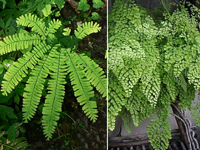
|
Azalea photo, description syn. Rhododendron Evergreen and Deciduous shrubs Indoor and garden 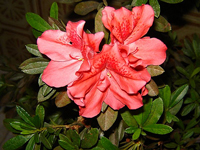
|
Azorella photo, description Groundcover plant 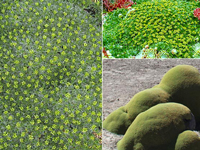
|
Air photo, description syn. The common air - Irish root, sabelnik, ir, yavar, orca Perennial garden, indoor plant Plant shores of reservoirs height: 10 - 120 cm 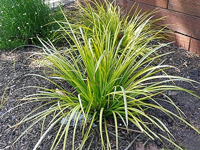
|
Acantolimone photo, description Undersized flowering shrubs Groundcover plant bloom: July - August height: 9 - 20 cm 
|
Silver Acacia (whitened) photo, description popularly: mimosa Mild climate garden tree Indoor plant 
|
Akebia photo, description syn. Chocolate Liana Perennial liana Flowering plant Frost resistance: up to -25 C ° 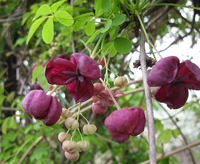
|
Andromeda photo, description syn. Picked up, consumptive grass, white leaf, marsh, drunken grass Deciduous shrub Poisonous plant Groundcover plant Medicinal plant 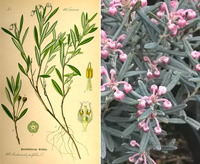
|
What about the price photo, description Groundcover plant Short shrub or shrub height: 5 - 30 cm 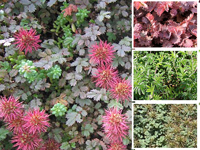
|
Spruce photos, types, description drug Christmas tree It has dwarf, spherical, conical, creeping varieties  |
Juniper photos, types, description syn. veres - juniper ordinary Trees, shrubs Colony-shaped, conical, shrubby, creeping varieties 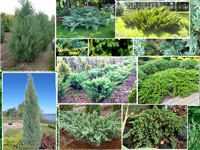 |
|---|

